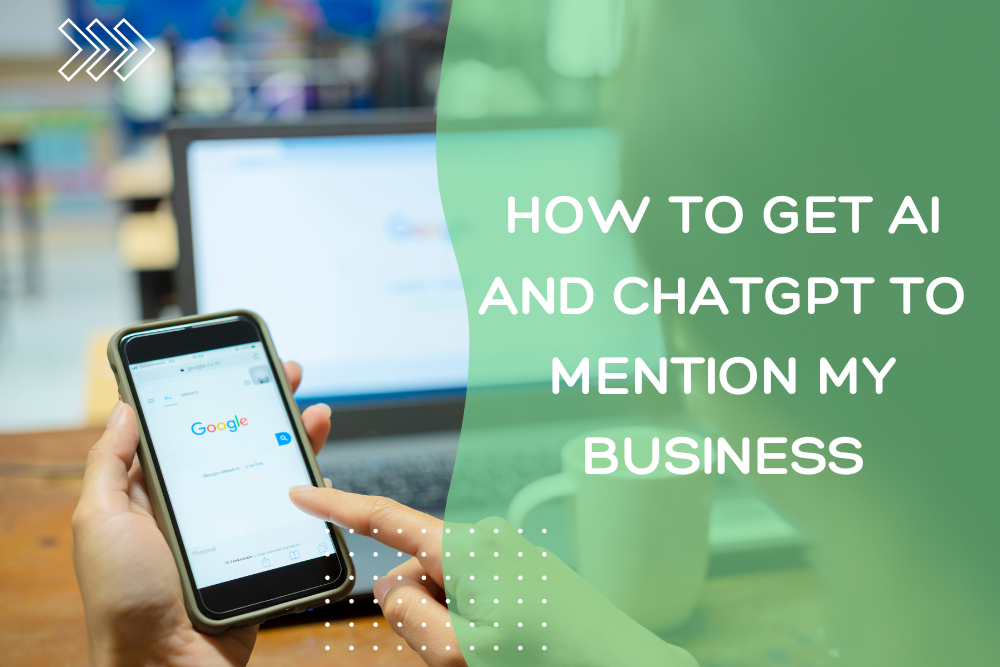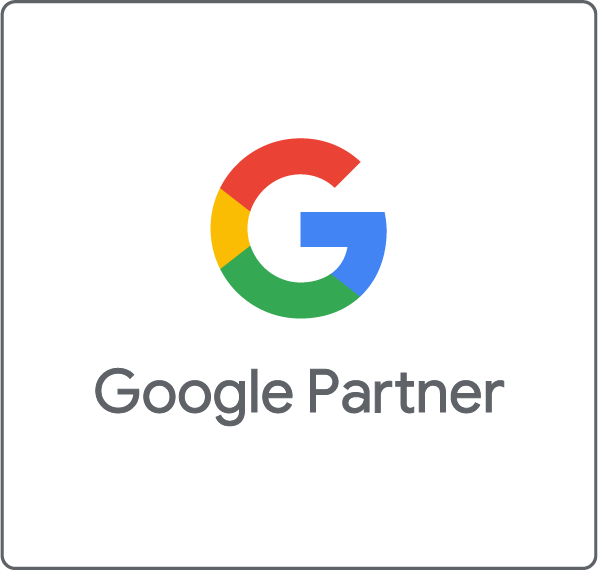© 23e2 Business Services Inc. | Working With 3rd Parties
How to Get AI and ChatGPT to Mention my Business

How to Get ChatGPT to Mention Your Business To Other Users
To have ChatGPT suggest your business, it’s important to ensure that the model has accurate details about your company. One way to achieve this is by sharing information about your business with OpenAI. However, it’s crucial to understand that ChatGPT operates on pre-existing data. The models are trained on diverse, publicly available data from the internet up to the knowledge cutoff date.
To enhance the likelihood of being mentioned, improve your web marketing, SEO, and reputation in your industry to increase the chances of being mentioned in future updates.These efforts might increase the chances of your business being recommended in future updates to the OpenAI model.
How To Provide Information About Company to OpenAI
OpenAI doesn’t have a public mechanism for individuals or companies to submit specific data for inclusion in their models. The training process involves large-scale, pre-existing datasets from diverse sources available on the internet.
If OpenAI were to consider external contributions or updates, they would likely communicate this through official channels, such as their website, blog, or other public announcements.
How To Maximize The Chances of Your Business Became Recommended by AI Responses?
- Utilize Natural Language and Conversational Phrases: Craft your content using natural, everyday language that mimics how people naturally ask questions. This makes it easier for AI chatbots to understand and select your content as the best answer.
- Focus on Long-Tail Keywords: These are longer and more specific keyword phrases that visitors are more likely to use when they’re closer to a point-of-purchase or when using voice search. This specificity can play to your advantage in appearing in AI chatbot results.
- Regularly Update Your Content: AI systems favor current and regularly updated information. Keeping your content fresh and relevant not only helps with SEO but also ensures that AI chatbots view your business as a reliable source of information.
- Optimize for Featured Snippets: These are highlighted search results that appear at the top of Google’s search results and aim to answer the searcher’s query right away. Structuring your content to be chosen as a featured snippet can also get it prioritized by AI chatbots.

- Implement Schema Markup: This is a code you put on your website to help search engines return more informative results for users. When applied correctly, it can make your content more readily understood and categorized by AI, enhancing your visibility in chatbot responses.
- Monitor Performance and Seek Feedback: Use tools to monitor how your content performs in search results and seek feedback on its effectiveness in answering queries. This will help you refine your approach to better align with how AI chatbots parse and prioritize information.
- Engage on Social Media Platforms: AI chatbots often pull information from social media, so having an active and informative presence on these platforms can increase your visibility in chatbot responses. Ensure your social media profiles contain up-to-date contact information, business descriptions, and links to your website.
Set Up Business Profiles on Directories and Build Citations
Directories refer to digital platforms or databases that categorize and display businesses, offering crucial details like names, addresses, contact information, and provided services.
Google My Business: An indispensable directory for any business looking to enhance local SEO and visibility in Google’s suite of services including Maps and Search, important for AI-driven queries about business locations and services.
LinkedIn Company Directory: Especially for B2B companies, maintaining an up-to-date LinkedIn profile can enhance visibility in professional queries and is often considered by AI for business-related questions.
TripAdvisor: For businesses in the hospitality and travel sectors, listings on TripAdvisor can significantly boost visibility in travel-related AI chatbot queries and recommendations.
BBB (Better Business Bureau): Listing your business on BBB can add a layer of trust and authority, which AI systems consider when recommending businesses to users, especially for service-based queries.
Industry-Specific Directories: Depending on your business niche, being listed in top-rated, niche-specific directories (e.g. Avvo for lawyers, Healthgrades for doctors) ensures that AI chatbots can find and recommend your services for specialized queries.
Facebook Business Pages: As a widely used platform, maintaining a detailed Facebook Business page can help AI identify your business for social-related queries, especially as chatbots increasingly pull from social media data.

Establish Yourself as an Industry Expert
Identify Audience Needs Through AI Insights: Utilize AI-driven analytics tools to gain a deeper understanding of your target audience’s search behaviors and preferences. This allows you to pinpoint exactly what information your audience seeks, enabling the creation of content that directly meets their needs and boosts your brand’s relevance in search results.
Use AI to Enhance Content Personalization: Implement AI technology to tailor your content to individual users based on their past interactions, search history, and preferences. Personalized content significantly increases engagement and positions your brand as a thoughtful leader that understands and addresses specific customer needs.
Predict Future Trends with AI: AI tools can not only analyze current data but also predict future trends within your industry. By staying ahead of these trends, you can create forward-thinking content that positions your brand as an authoritative voice on emerging topics, ensuring you’re always one step ahead in content relevance.
Improve Content Quality with Natural Language Processing (NLP): Utilize NLP, a branch of AI, to refine your content’s readability, tone, and structure, making it more appealing to both your audience and search engines. This optimization ensures your content is easily digestible and engaging, enhancing user experience and satisfaction.
Automate Content Distribution Using AI: Extend the reach of your comprehensive, expert content by using AI-powered tools to automate its distribution across various channels. This ensures your valuable content is seen by a broader audience at optimal times, increasing visibility and driving more targeted traffic to your website.
How To Prevent Ai Misinformation About Your Business
Misinformation occurs when AI chatbots inadvertently provide incorrect information about your business. Combat this by regularly updating your online profiles and website content, ensuring accuracy and consistency across the web.
Implement Structured Data: Utilize structured data on your website to clearly define your business information for AI chatbots, making it easier for them to interpret and accurately present your data.
Engage with Customer Feedback: Monitor and respond to customer inquiries and feedback across various platforms. This not only provides direct engagement but also helps in identifying any misinformation being propagated, allowing you to address it promptly.
Educate Your Audience: Proactively educate your audience through social media and blog posts about your services, specializations, and any common misconceptions. A well-informed audience can better discern factual information from inaccuracies.
Collaborate with AI Developers: Where possible, collaborate with AI developers and platforms to provide direct feeds of accurate business information, ensuring that the most current and correct details are being sourced by chatbots.
What Elements Are Crucial for Recommendations by ChatGPT?
Relevance: The cornerstone of ChatGPT recommendations, relevance determines how closely your content answers the specific query. This goes beyond keyword matching to understanding the context and intent behind a search, necessitating content that addresses the user’s underlying questions, concerns, or needs directly and comprehensively.
Authority: Digital platforms are keen on recommending sources that exhibit deep knowledge and expertise. This authority is often gauged through external indicators such as backlinks from reputable sites, mentions across the web, and citations in industry publications.
Currency: The internet values the new and now, and so does ChatGPT. Updated content, recent studies, and current trends have a better chance of being recommended. Regularly refreshing your existing pieces and staying abreast of and contributing to the latest discussions in your industry are practices that boost the currency of your content.
User Engagement: How users interact with your content provides ChatGPT with signals of its quality and usefulness. Metrics like time spent on page, bounce rates, and interaction levels (comments, shares) indicate content engagement.
Comprehensive Coverage: Beyond answering a query, the depth at which your content covers a topic matters. ChatGPT looks for content that provides a holistic view, covering all facets of a question. In-depth analysis, covering related subtopics, and offering actionable insights make your content more comprehensive.
Clarity and Readability: The manner in which information is presented affects its recommendability. Clear, concise, and well-structured content that’s easily scannable and understandable by the layperson ranks high.
Technical SEO: The underpinnings of your content’s discoverability, such as fast load times, mobile optimization, and secure connections (HTTPS), indirectly affect recommendations. Ensuring a flawless technical SEO setup helps AI platforms like ChatGPT crawl and understand your content more effectively.
Trustworthiness and Credibility: Establishing trust involves clear authorship, citing reputable sources, and providing evidence for claims. Content that’s transparent about its sources and backs up assertions with credible information fosters trust, a critical determinant for AI-powered recommendations.
AEO is not just the future; it’s the present redefining how businesses interact with their digital audience. By optimizing for Answer Engines, you’re ensuring that your brand doesn’t just exist online but stands out as the go-to authority, ready to answer the call of the curious and the concerned.
Begin your journey toward Answer Engine Optimization today and set your brand apart in the era of instant information!
What Is Answer Engine Optimization (AEO)?
AEO is the strategic optimization of content to be favorably recognized and recommended by AI-driven platforms, like chatbots and virtual assistants. Unlike traditional search engines that list web pages as results, answer engines aim to provide immediate, direct responses to user queries.
For instance, when applying AEO strategies to ensure your content is optimized for AI-driven platforms, imagine asking ChatGPT, “What are the best waterproofing companies in Toronto?” You’d want strategies in place to ensure that your company gets mentioned in the response.
This involves creating content that directly answers common queries related to your industry, ensuring your business information is accurately reflected across relevant directories, and establishing your brand’s authority in the field of waterproofing.
FAQs About AEO
An optimization engine is a system or tool designed to analyze and adjust processes or operations to improve performance, efficiency, or outcomes. In digital contexts, it often refers to software or algorithms that help enhance website performance, search engine rankings, or digital marketing campaigns.
To optimize speed, particularly in the context of digital performance or engines, focus on minimizing load times through reducing file sizes (images, code minification), improving server response time, utilizing content delivery networks (CDNs), and enabling browser caching.
In the context of a mechanical engine, engine speed can be increased by enhancing air intake (using turbochargers or superchargers), improving fuel delivery systems, optimizing ignition timing, and reducing internal friction through high-quality lubricants or design improvements.
Optimizing efficiency involves streamlining processes, eliminating waste, and maximizing resource utilization. This can be achieved by adopting energy-efficient technologies, automating repetitive tasks, improving workflow designs, regularly maintaining equipment to prevent breakdowns, and utilizing data analytics to identify and address inefficiencies.

